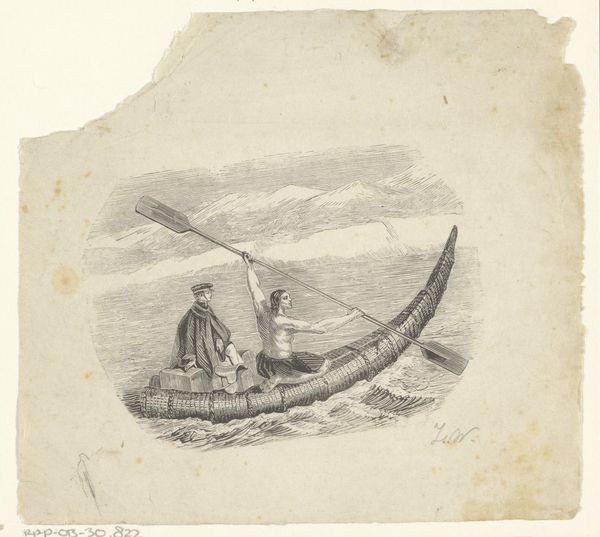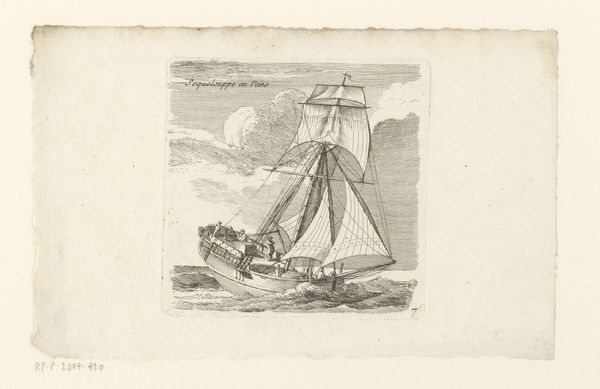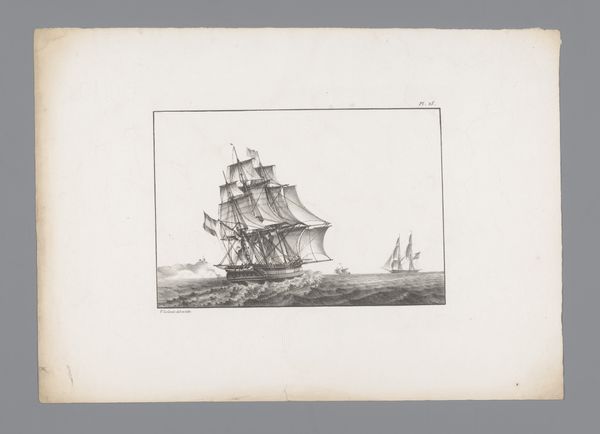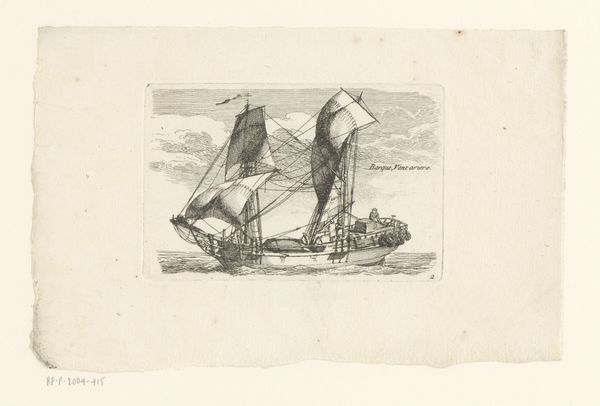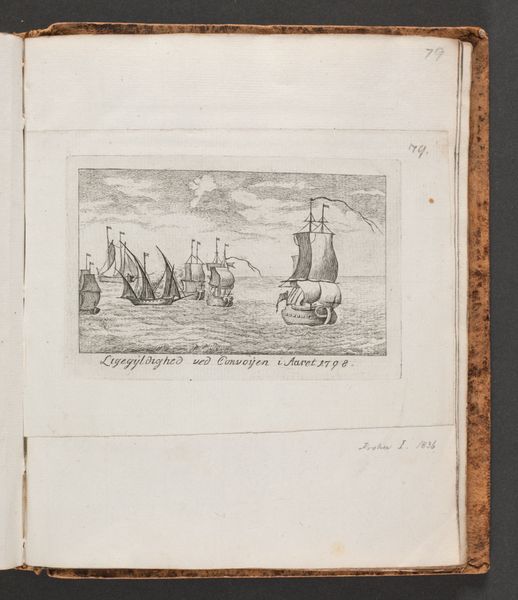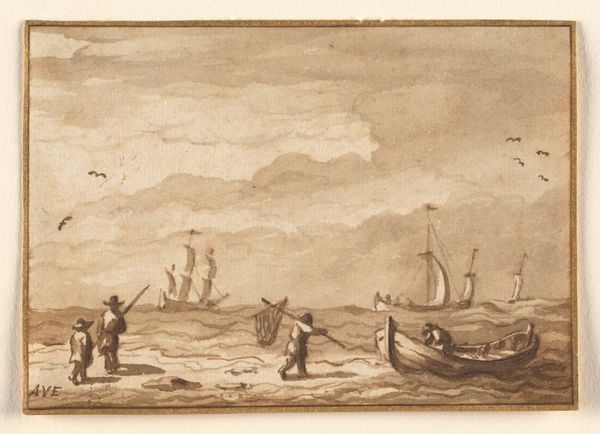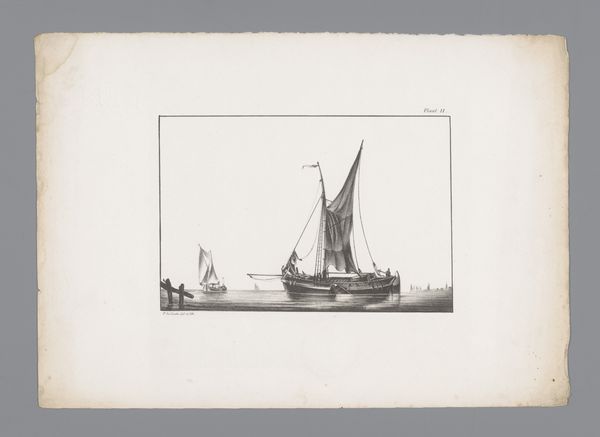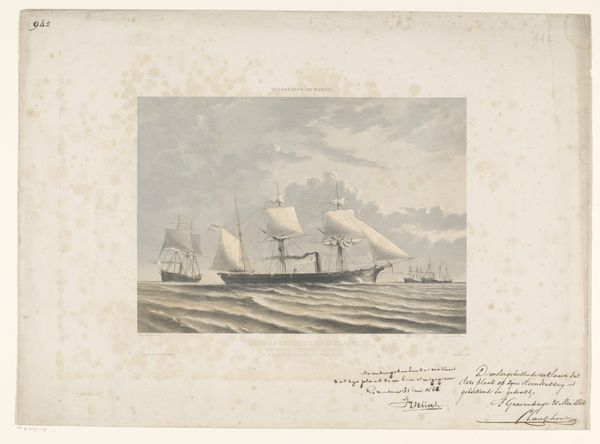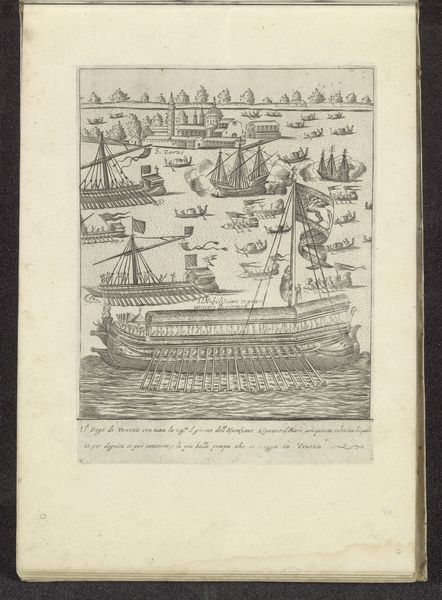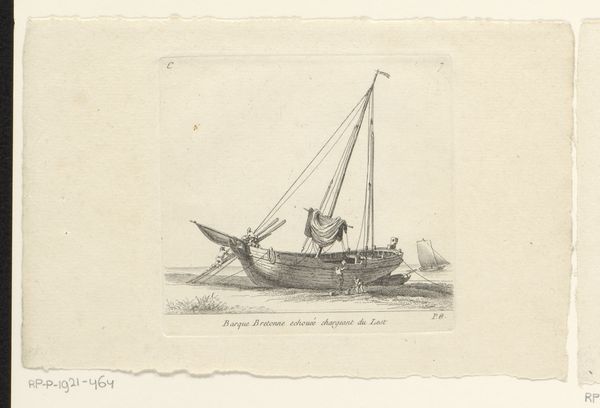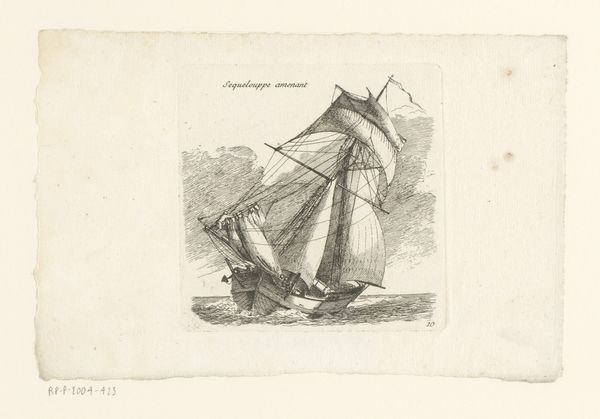
Dimensions: height 155 mm, width 195 mm
Copyright: Rijks Museum: Open Domain
Jan Brandes made this pen and watercolor drawing, "Loodsmannetje en schepen in zeedeining," sometime between 1743 and 1808. The detailed rendering of a striped fish floating above ships navigating a stormy sea asks us to consider the artist's position in society, and the cultural beliefs of his time. Brandes was a clergyman, artist and traveler for the Dutch East India Company. His identity as a white European man intersects with the history of colonialism, when the Dutch were major players in maritime exploration, trade, and the exploitation of foreign lands and peoples. How do we reconcile the beauty of this drawing with the violent history it evokes? The artist seems to be making a connection between the natural world and human endeavor. "There is firstly the movement in the sea," Brandes writes on the image, "that is the great surge of the sea." Are we also to see the colonial project as a natural, inevitable force? Perhaps by reflecting on the emotional and personal dimensions of this piece, we can engage in a necessary dialogue between art history and contemporary theory.
Comments
No comments
Be the first to comment and join the conversation on the ultimate creative platform.
